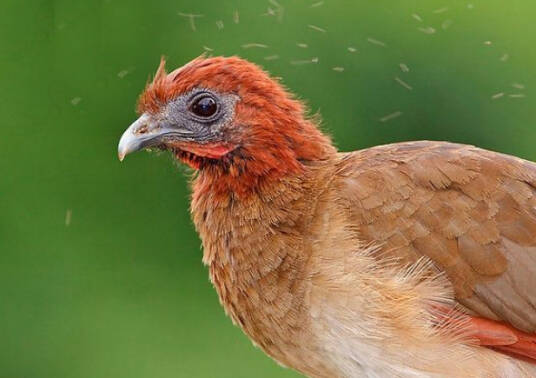Ortalis erythroptera
IUCN
LCBasic Information
Scientific classification
- name:Ortalis erythroptera
- Scientific Name:Ortalis erythroptera,Rufous-headed Chachalaca
- Outline:Landfowl
- Family:Chickeniformes P.family P.Minutus
Vital signs
- length:55-66cm
- Weight:620-645g
- lifetime:No textual research information is available
Feature
It has a reddish-brown head
Distribution and Habitat
It is found in Colombia, Ecuador and Peru.
Appearance
The brown crested pheasant is 56-66 cm long, 620-645 grams. It is a relatively small member of the family Cracidae, a group of brown-plumed birds that, as its English name suggests, have a reddish-brown head. The upper body is brown, and the main and outer tail feathers of the wings are reddish brown. The lower body is white, and a loose fold of red skin hangs under the throat. Beak and legs are dark gray.
There will be repeated loud tweets and alarm sounds 'kwak-ar-ar', 'cha-cha-kaw' or shriller'kra-kra-ka'.
Details
Brown crested pheasant (Ortalis erythroptera) Rufous-headed Chachalaca, no subspecies.

Listed on the International Union for Conservation of Nature (IUCN) 2016 Red List of Threatened Species ver 3.1 - Vulnerable (VU).
Protect wild animals and eliminate wild meat.
Maintaining ecological balance is everyone's responsibility!








